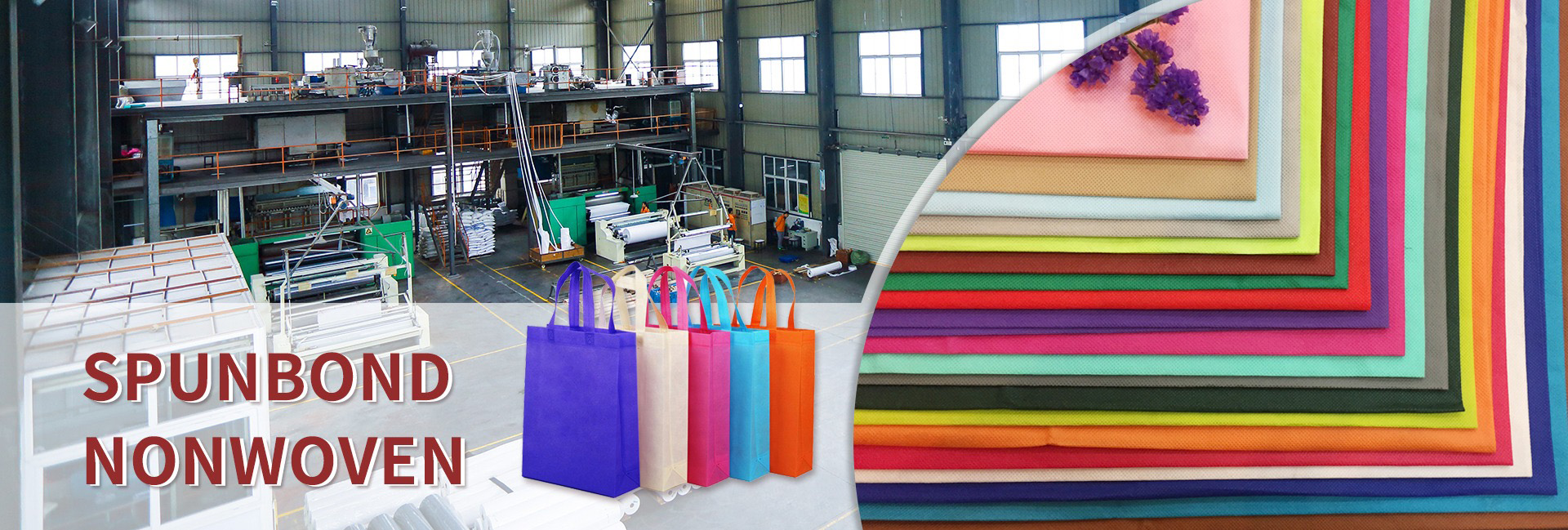Definition and composition of green nonwoven fabric
Green non-woven fabric (also known as plant-based non-woven fabric or environmentally friendly non-woven fabric) is a type of non-woven fabric made by melting polypropylene (PP) or polyester fibers (PET) at high temperatures, spinning them into a mesh, and then pressing them. Unlike traditional textile fabrics, it does not require spinning and weaving, but directly forms a stable structure through fiber bonding. Its common weight is 50-150g/㎡, with a thickness of 0.5-3mm, and it has the characteristics of lightweight and biodegradability (some models).
According to different purposes, green non-woven fabrics can be divided into:
1. Slope protection type: high weight (100-150g/㎡), strong tensile strength, used for slope stabilization;
2. Coverage type: Low weight (50-80g/㎡), mainly used for seed insulation and moisture retention;
3. Degradable type: Made of materials such as corn fiber, it naturally decomposes within 6-12 months and is suitable for short-term greening projects.
The core uses and advantages of green non woven fabrics
(1) Slope protection and soil stabilization: Laying in sloping areas such as highways and riverbanks can effectively prevent soil erosion. Experimental data shows that the use of non-woven fabric slope protection reduces soil erosion by more than 70% (quoted from a study in the Journal of Soil and Water Conservation in 2021).
(2) Promote plant growth: Covering the surface of the sowing soil can maintain humidity, regulate temperature, and increase seed germination rate by 30% -50%.
(3) Environmental characteristics: Some products have passed the EU OK Biodegradable certification and are pollution-free after degradation.
How to choose suitable green nonwoven fabric?
1. Material selection: For long-term projects, choose polyester fiber (with strong weather resistance), while for short-term projects, choose biodegradable materials;
2. Performance testing: The tensile strength should be ≥ 8kN/m (GB/T 17639-2008 standard), and the permeability should be>10cm ³/(cm ² · s);
3. Cost calculation: The price of ordinary models is 0.5-2 yuan/square meter, while the price of biodegradable models is higher (3-5 yuan/square meter).
Extended applications: In recent years, green non-woven fabrics have also been used in fields such as roof greening and desert management. For example, in the Kubuqi Desert control project, non-woven fabric covering technology increased the vegetation survival rate from 20% to 65%.
Selection of weight for non woven fabrics in different terrains
1. Urban green spaces, golf courses, and other flat or sloping terrain: commonly used 12g/15g/18g/20g white non-woven fabric or grass green non-woven fabric, with different natural degradation times depending on the emergence period of grass seeds.
2. Highways, railways, and mountainous areas with steep slopes for spraying and greening: 20g/25g non-woven fabric specifically designed for lawn greening is commonly used. Due to the steep slope and high wind speed, the non-woven fabric needs to have strong toughness and be less likely to tear when exposed to wind. The non-woven fabric can be selected based on the germination period of grass seeds and other requirements for the duration of degradation.
3. Application of non-woven fabric for wrapping soil balls in seedlings and cultivating beautiful plants: commonly used white non-woven fabrics of 20g, 25g, and 30g are convenient for wrapping and transporting soil balls. When transplanting, there is no need to remove the fabric, and the seedlings can be planted directly, saving time and effort, and improving the survival rate of seedlings.
The role of laying non-woven fabric in the construction of artificial turf
Artificial turf construction requires 15-25g white non-woven fabric, which has insulation properties to prevent grass seeds from splashing out of the soil during rain. 15-25g of white non-woven fabric has the function of water permeability and breathability, allowing water flow to penetrate into the soil during rain and watering.
The product has the characteristics of biodegradability, no damage to soil, and is an environmentally friendly product advocated by the country. It has wear resistance, water absorption, anti-static properties, softness, good breathability, and is cheaper than grass curtains. I hope my answer is helpful to you.
Dongguan Liansheng Non woven Technology Co., Ltd. was established in May 2020. It is a large-scale non-woven fabric production enterprise integrating research and development, production, and sales. It can produce various colors of PP spunbond non-woven fabrics with a width of less than 3.2 meters from 9 grams to 300 grams.
Post time: Aug-19-2025

